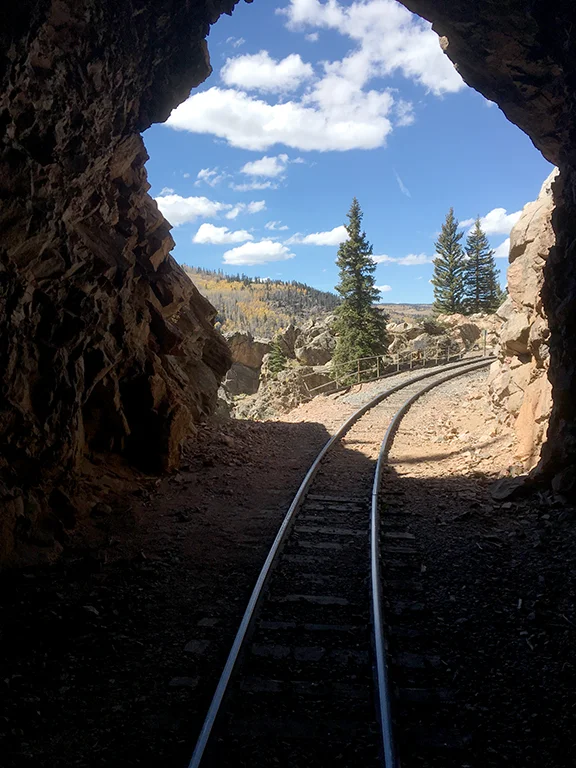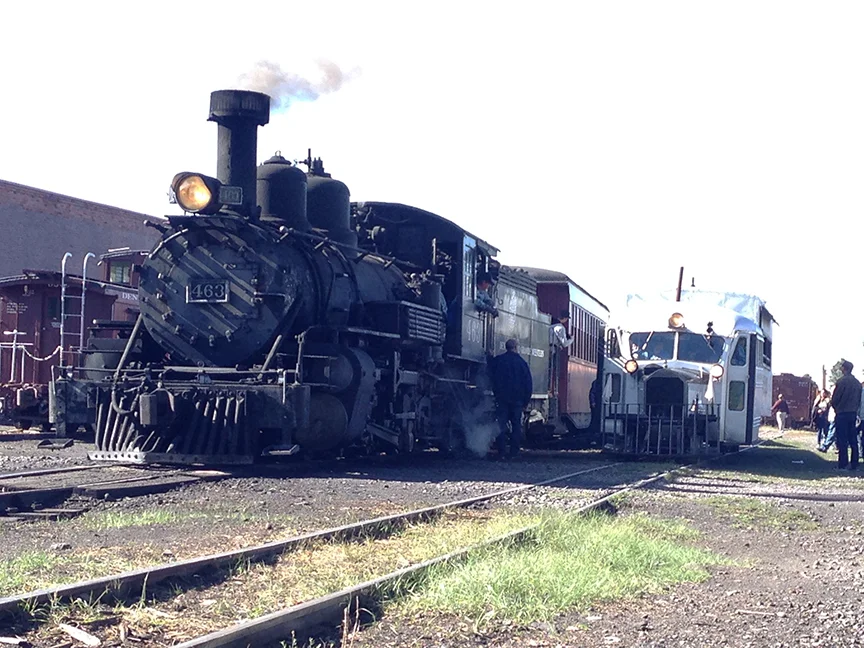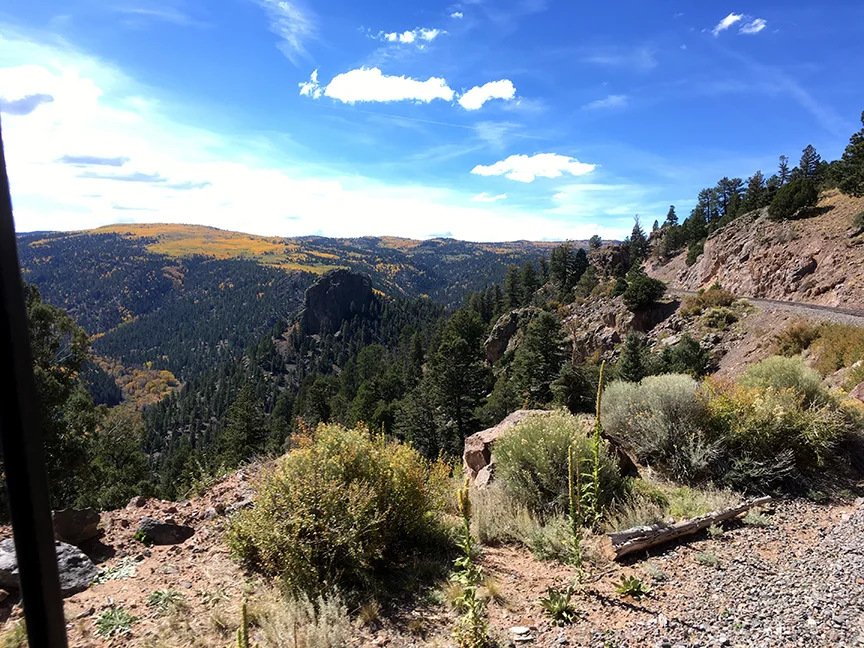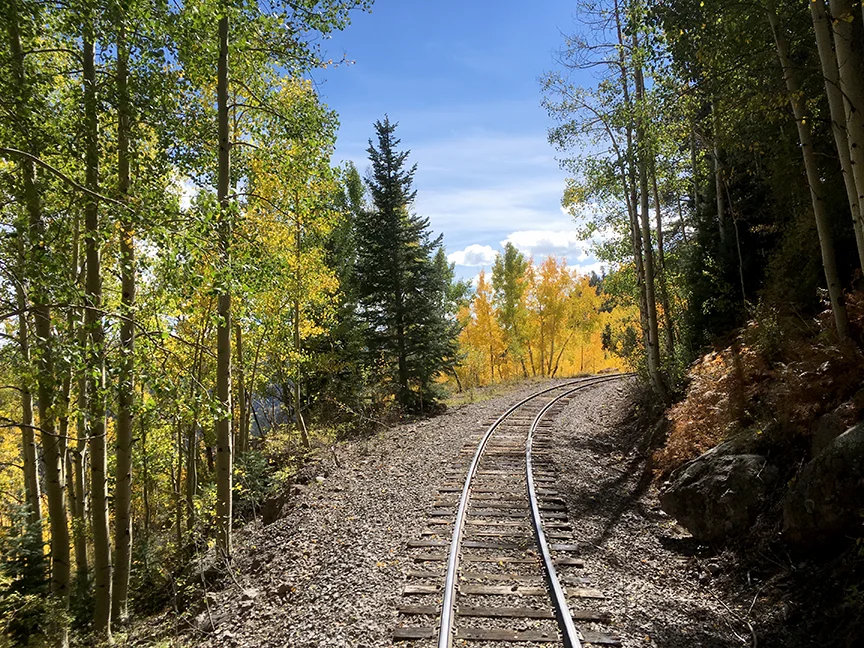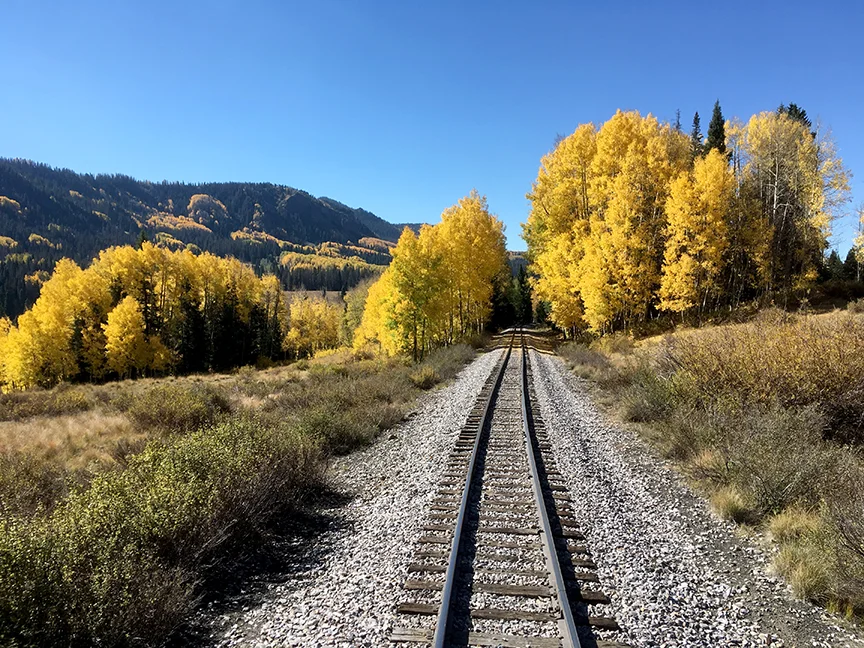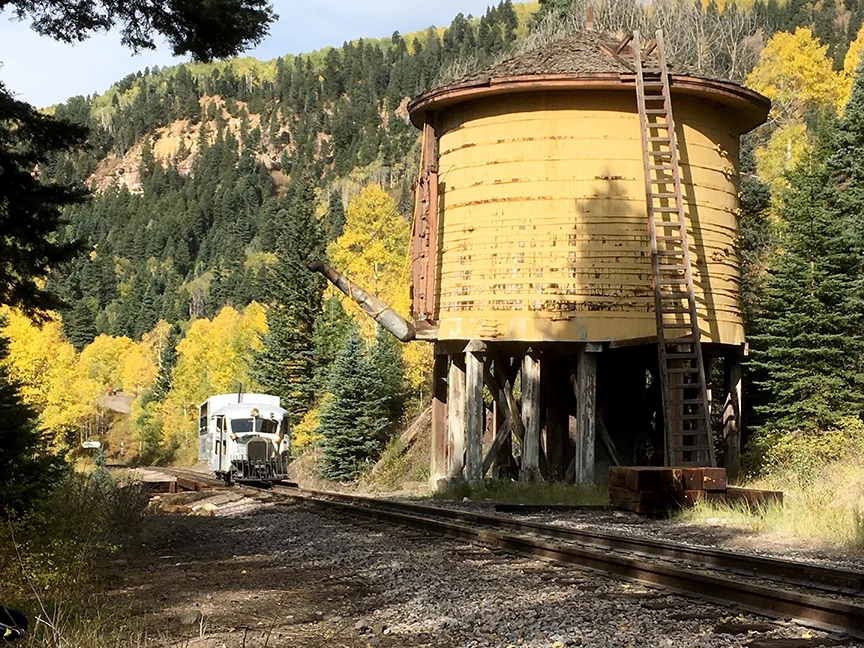Well, THAT was fun! This past weekend we volunteered with the Galloping Goose Historical Society for an inaugural event called the "Gathering of the Flock" at the Ridgway Railroad Museum in Ridgway, CO. The Ridgway Railroad Museum has a half mile loop track on a 16 acre site that is perfect for running narrow gauge gasoline-powered railcars like the Galloping Geese. Here's a shot of the railcars queuing up for a parade. From right to left are a Rio Grande Southern Railroad (RGS) Model T inspection car, RGS Motor No. 1, Galloping Goose No. 4, and Galloping Goose No. 5. Galloping Goose No. 6 is out of the picture on the left hand side. The fact is, there were more machines than I could fit into my camera frame which is a very good problem to have! What’s the difference between a Motor and a Galloping Goose? Click here for a brief history of the Rio Grande Southern Railroad and the Galloping Geese.
Our group, the Galloping Goose Galloping Historical Society, transported Goose No. 5 from Chama, NM where we’d just finished up a week of excursions on the Cumbres & Toltec Scenic Railroad (C&TS). See our post titled, Riding Galloping Goose No. 5 on the Cumbres & Toltec Scenic Railroad is something everyone should do at least once in their lives. Once in Ridgway, we gave nearly 500 passenger rides during the weekend! That’s FOUR TIMES the amount of rides that we typically give during a week of operation on a railroad like the C&TS! People flew in from all over the country to ride these whimsical machines.
Highlights: Galloping Goose No. 4 made a special trip from Telluride, CO and Goose No. 6 came all the way from the Colorado Railroad Museum in Golden, CO. This was the first time that the Galloping Geese had been back together in Ridgway, where they were originally built, in nearly 70 years. The weekend was a hoot, and we hope to do it again next year!








